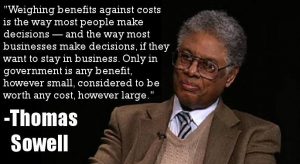To administrators everywhere: If you want to put up the data wall with copper ink for students whose MAPTM scores improved 1-5 points, silver for those who improved 6-10 points and gold for those at 11+ points and above, please make sure those walls remain anonymous.
Don’t even let the kids know.
If you tell Jaime he is #112, he will tell his friend Jorge or somebody. Kids don’t keep secrets. Even when they know they are supposed to keep secrets, they share with BFFs or prospective BFFs. Even when trying to keep secrets, young kids cannot be trusted.
“It wasn’t my mom’s dog “Rufus” who bit me. I fell down the stairs. (Custody fight underway.) I was just in Rufus’s space.”
Tricky of those stairs to leave semi-circular puncture marks. (The kid’s fine.)
To anyone who has bought into the idea that competition will spur greater efforts, I’d like to say that t’aint necessarily so. Competition works for some kids. Pitting the seventh graders against the eight graders in a mixed-grade classroom game of flyswatter can lead to a fierce, cheering game that helps everyone in the class learn. The best race I ever ran was against a girl who had been bullying me. But kids are not standardized factory inputs or outputs. Telling students to please sit down will get the crowd down, yes, but those same words can get a few kids to leap out of their seats.
I know this from teaching: When kids keep landing on the bottom often enough over a long period of time, some of them give up. Those data walls are dangerous to certain kinds of kids. That kid who lacks resilience and who believes that he is “bad at math” does not benefit from a wall that proves his point to him. I had a third grader tell me today that she was “bad at math” For proof, she presented the fact that she usually got Bs. That kid who truly takes failure to heart may feel bad every time he looks at that data wall. One kid might only hang onto that bad feeling for a few minutes before he starts to think about lunch and chicken nuggets, but another may dwell on his sadness, barely tasting the day’s nuggets while he considers his latest “failure.”
The kids at the bottom sometimes shut down. Mindset pep talks do not always prevent these shutdowns. Making data into a competition has advantages for many students, but not for students who are running short on resilience and perseverance. Every time a data wall goes up, if that wall allows a student to locate his or her position toward the bottom of the data, we may be sucking away a little bit of resilience, too.
We cannot measure resilience and perseverance, but anyone who thinks these traits have been equally distributed between kids needs to pull out the I.V. line to the Koolaid. Data walls can be motivators. They can also be attacks.
Eduhonesty. I honestly don’t see why we have to keep showing kids the data in big, cheery, decorated walls with stars, glitter and gold paint. But if we do, we absolutely should be keeping that data anonymous. We ought to be asking ourselves, too, if our discussions of the data with individual students provide the benefits we desire. More importantly, measured against those benefits, what are the actual costs of hammering home those numbers?
P.S. I want to pose one more unrelated observation because I don’t think I will get around to writing a post on the topic. I’d bet our data walls are discouraging efforts in many gifted children. That student who always comes out on top of the wall? What exactly is that student’s incentive to work harder?

